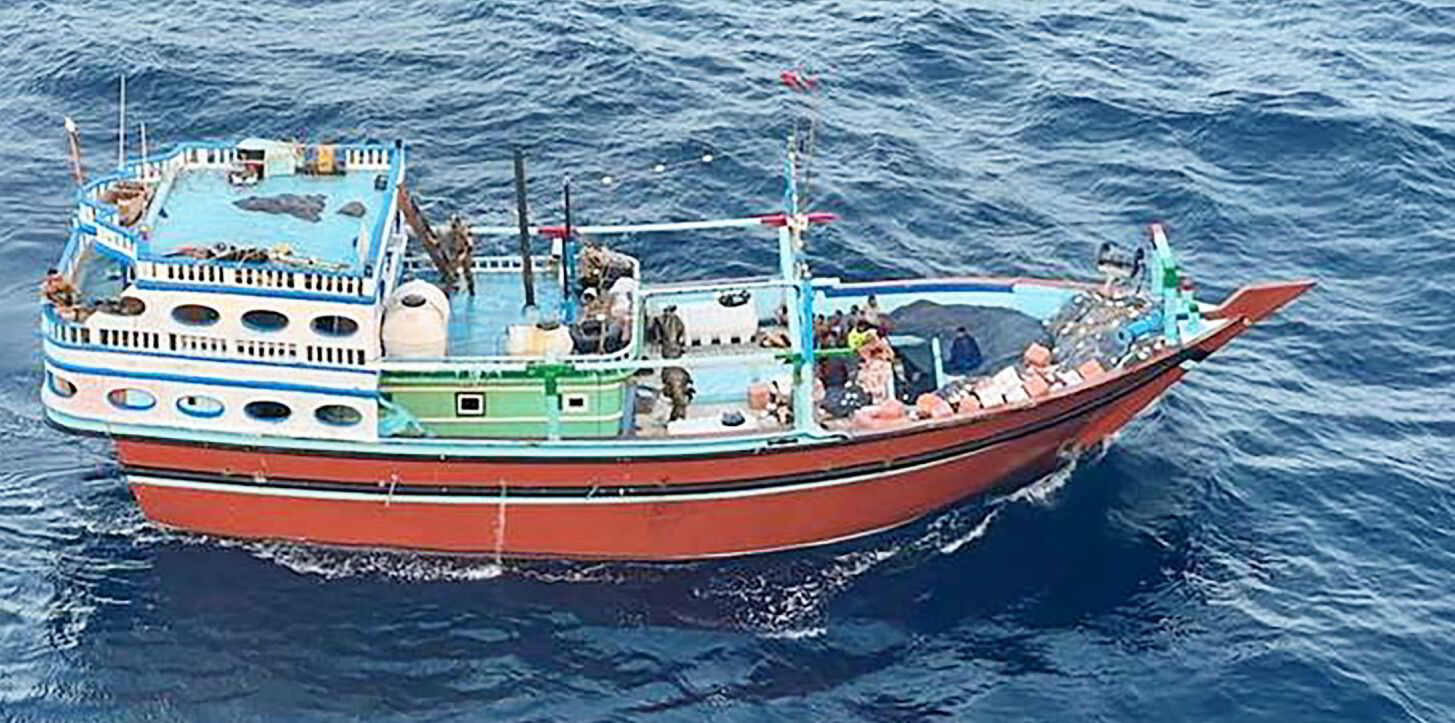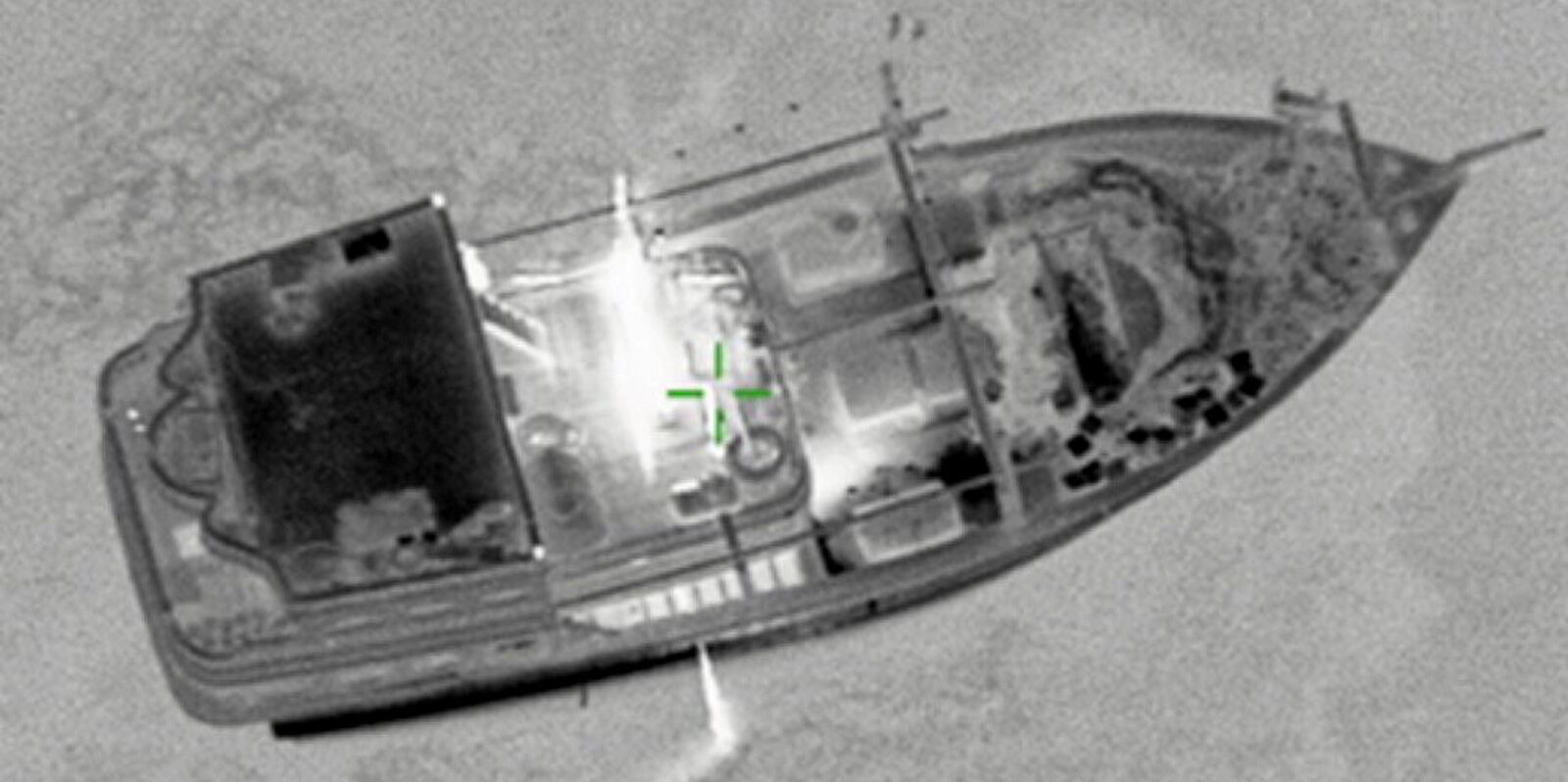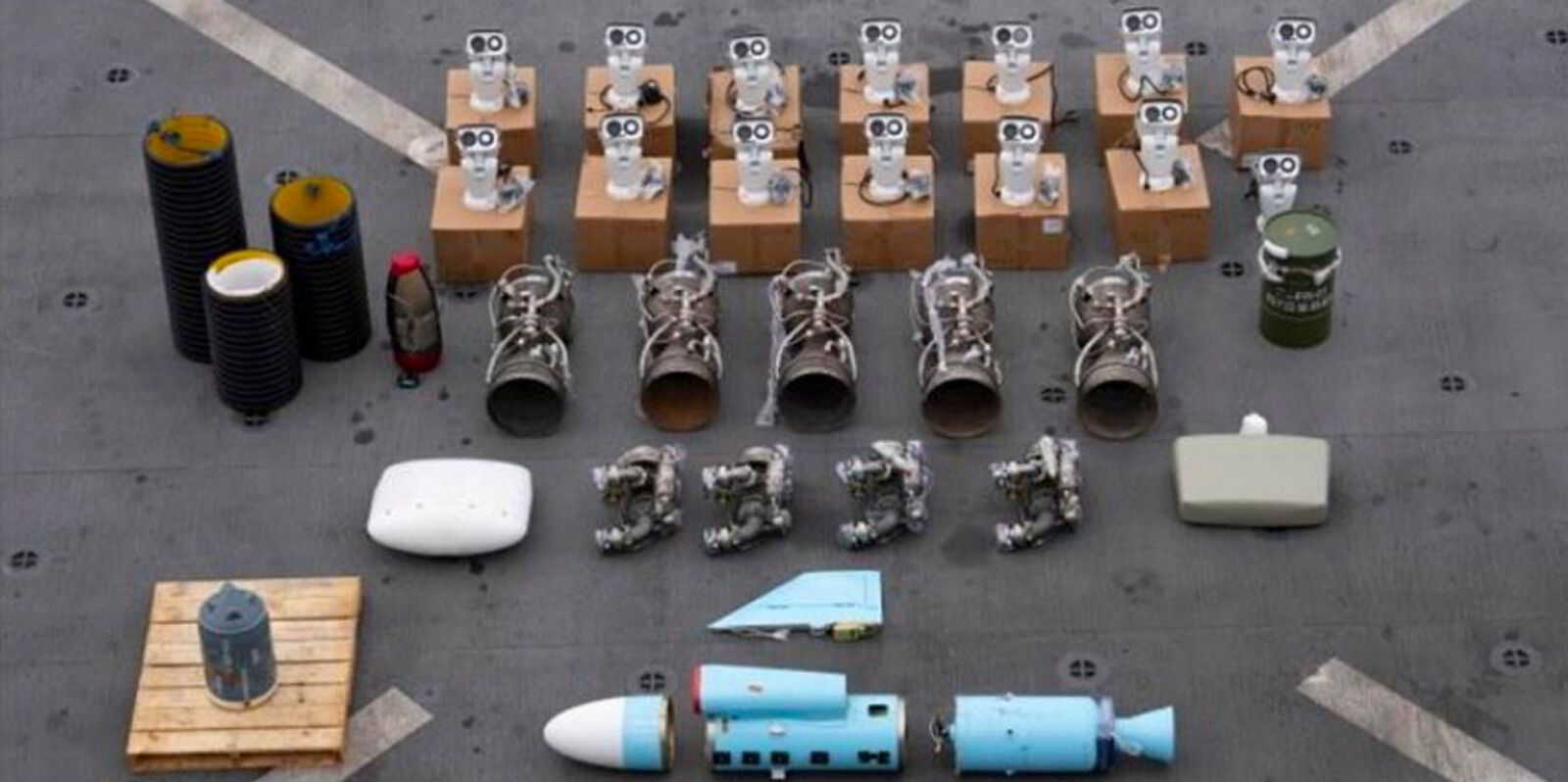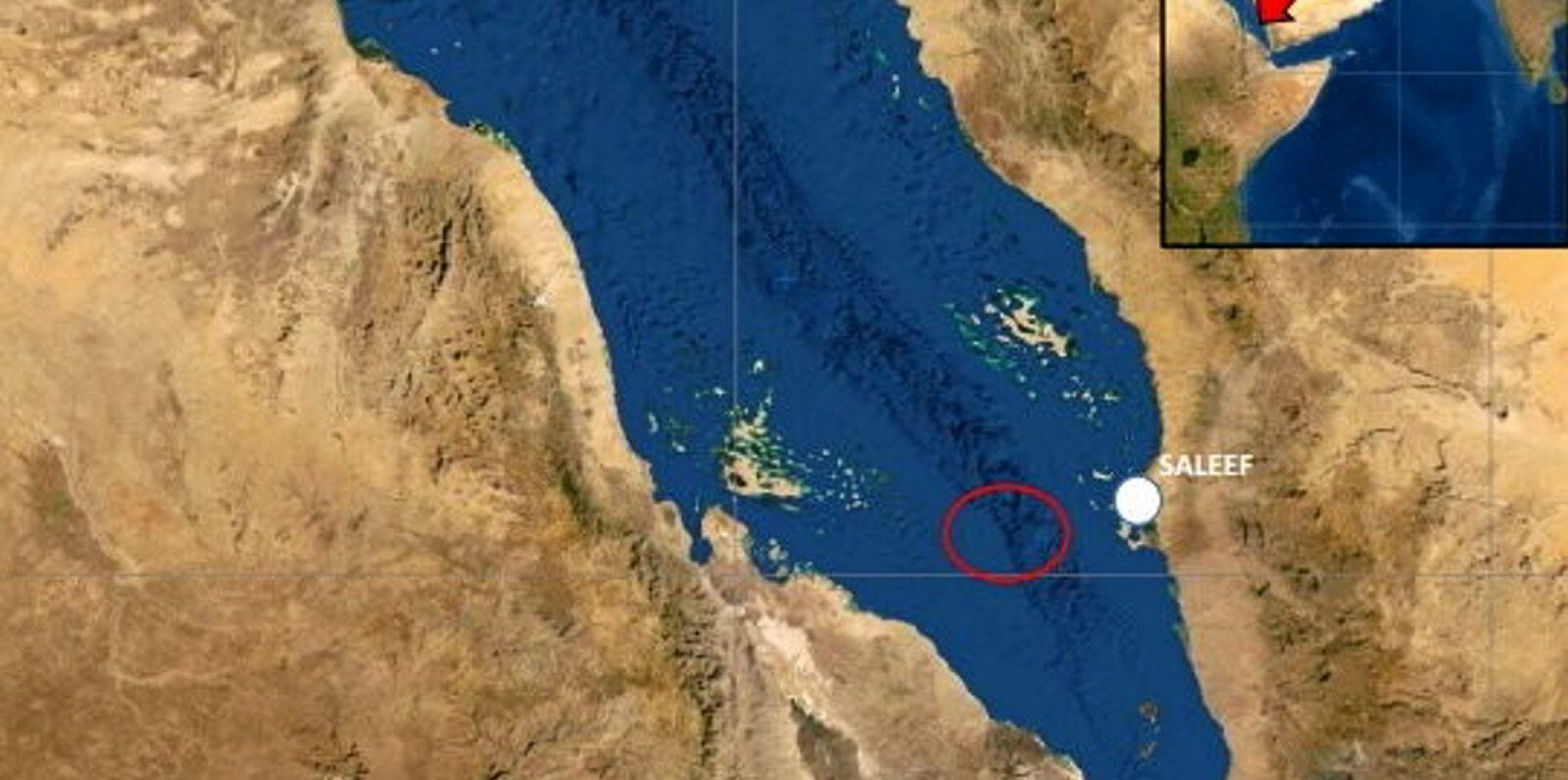Pakistani seafarer Muhammad Pahlawan allegedly began telling people he was the captain of a small vessel called the Yunus, named after one of his new employers, in September.
US prosecutors have alleged that, after starting to work with the Iranian brothers Shabab and Yunus Mir’kazei, he began helping them prepare the dhow for its new role: smuggling arms to Iran’s proxies.
When a team from the US Navy and Coast Guard boarded the Yunus off the coast of Somalia a few months later, it would open a window to the shadowy world of arms shipping used by Iran to supply the weapons the Houthis are using to menace shipping in the Red Sea and Gulf of Aden.
“Pahlawan completed multiple smuggling voyages, coordinated and funded by Shabab and Yunus, by travelling with cargo from Iran to the coast of Somalia and transporting that cargo to another dhow for a ship-to-ship transfer,” a grand jury said in an indictment.
The operation was part of a scheme to transfer weapons from Iran’s Islamic Revolutionary Guards Corps to the Houthis, the document alleged.
As TradeWinds reported last week, all three men were charged in the indictment, the second handed down since Pahlawan and his crew were apprehended in the January interdiction of the Yunus.
Prosecutors have alleged that Muhammad, who has pleaded not guilty in the case, began working with the Mir’kazei brothers in August.
According to the indictment, Pahlawan had begun working with Shabab to buy new equipment and install it on the vessel.
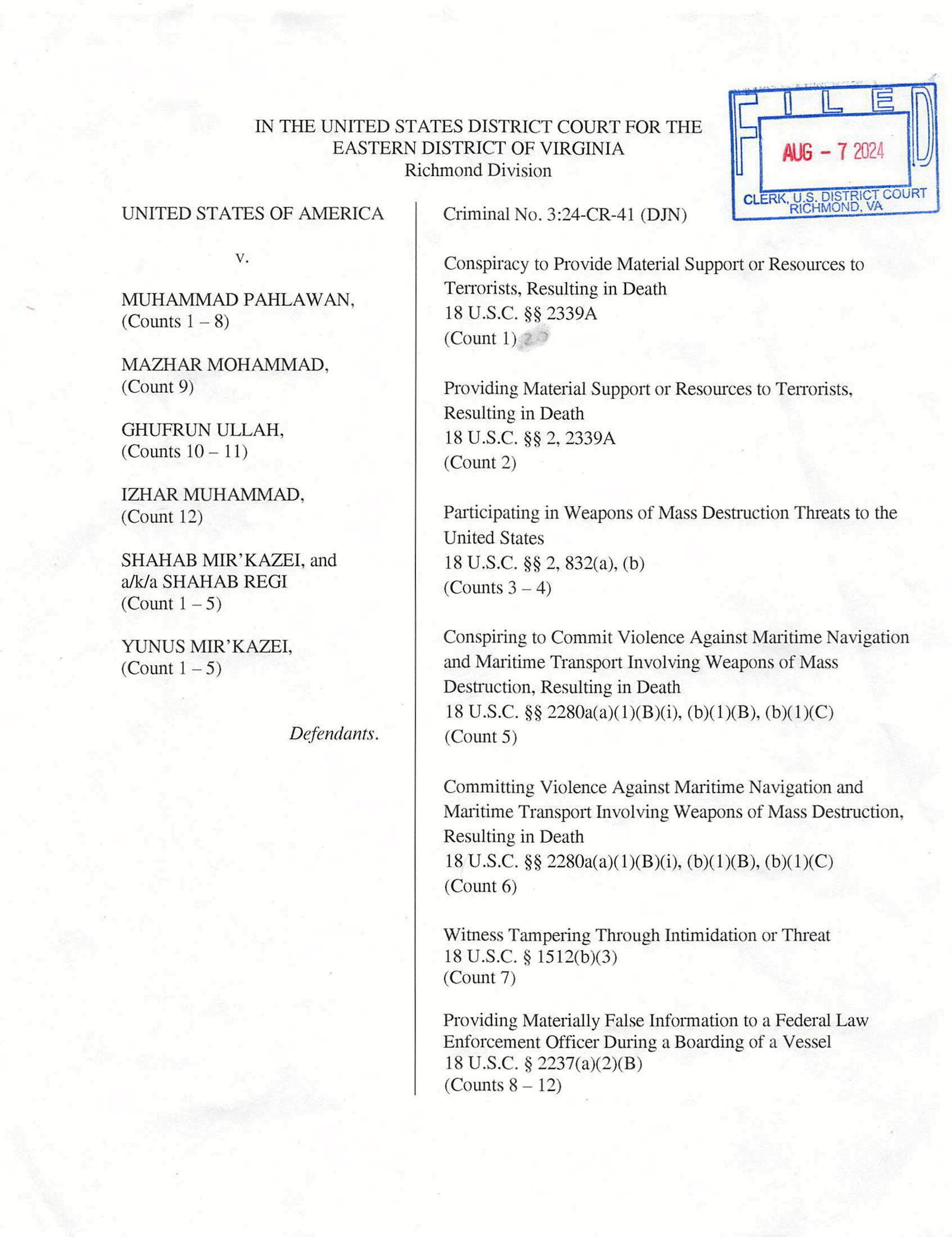
To get that job done, Shahab is accused of transferring the captain a first payment of IRL 100m ($2,400) into a bank account, before the brothers paid another IRR 800m through hawala services, as informal money changers are known in the Middle East.
The Yunus began sailing on 28 October, three weeks after Israel and Gaza became embroiled in a war that would become the Iranian Houthis’ rationale for their missile and drone attacks on shipping, from Chabahar Bay in Iran.
Prosecutors alleged that Pahlawan led the dhow on two voyages in November and December in which the crew carried out ship-to-ship transfers of its cargo in waters off Somalia.
Upon his return to Iran at the end of the second voyage in late December, authorities in the country arrested Pahlawan and his crew.
Shabab went to the prison where they were being held and secured their release, court papers in the US case show.
Finding himself in an Iranian prison allegedly did not keep Pahlawan out of the smuggling business, according to the indictment.
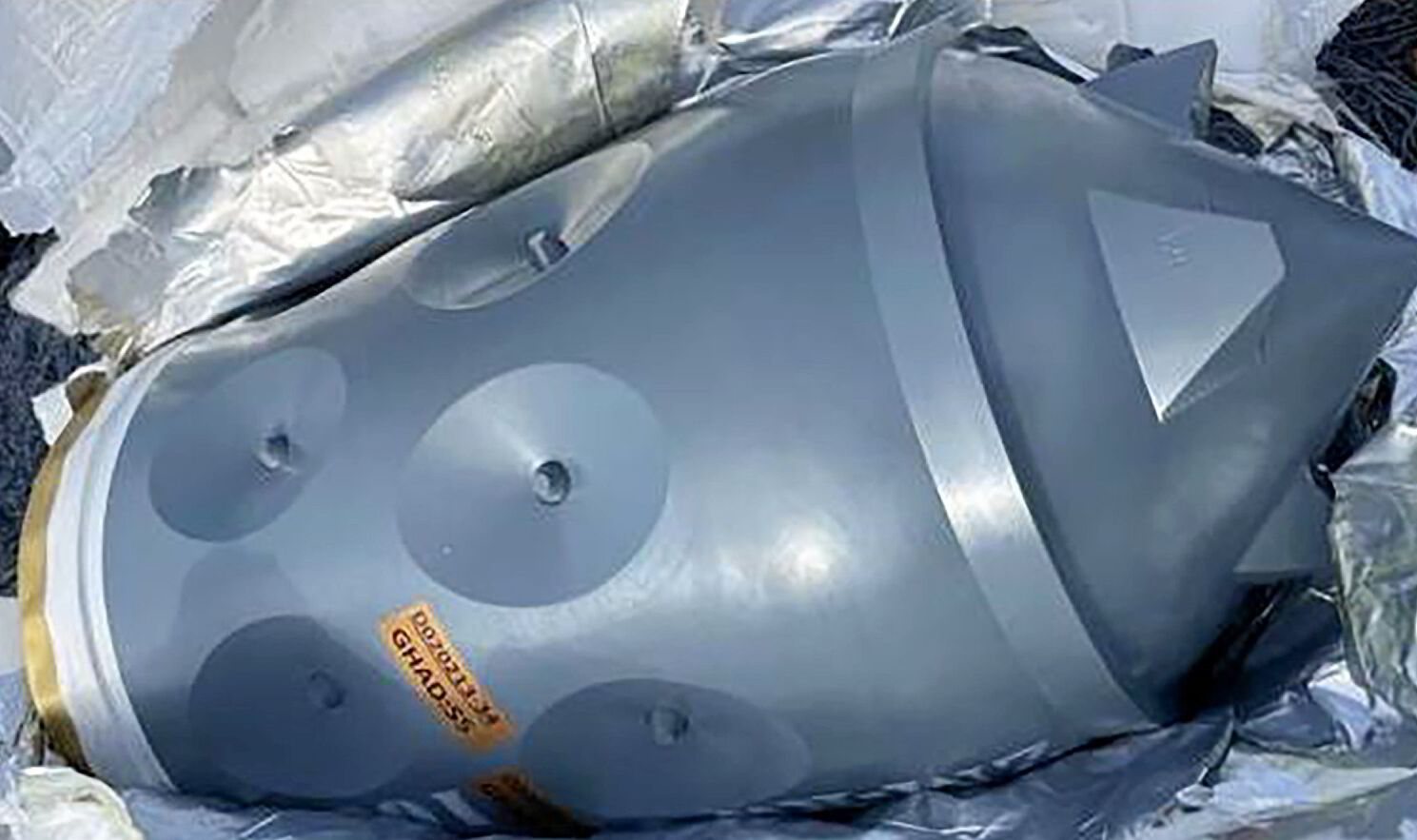
After his release, Yunus paid him another IRR 800m through hawala money changers, and the captain used hawala networks to distribute money to his family and the families of the dhow’s crew, US authorities alleged.
Pahlawan allegedly communicated to his family about buying property and building a new home in Pakistan.
Then he sailed the Yunus from the Iranian port of Konarak back to Chabahar, according to legal documents.
“On or about January 5, 2024, Pahlawan met with Shabab and others and instructed the crew to load various packages, which included advanced conventional weaponry, such as a warhead, anti-ship cruise missile components, and ballistic missile components, from a truck in Chabahar Port, Iran into the net hold of the dhow,” the grand jury said in the indictment.
The vessel sailed on its final voyage the same day. It was flying no flag and headed to waters off Somalia.
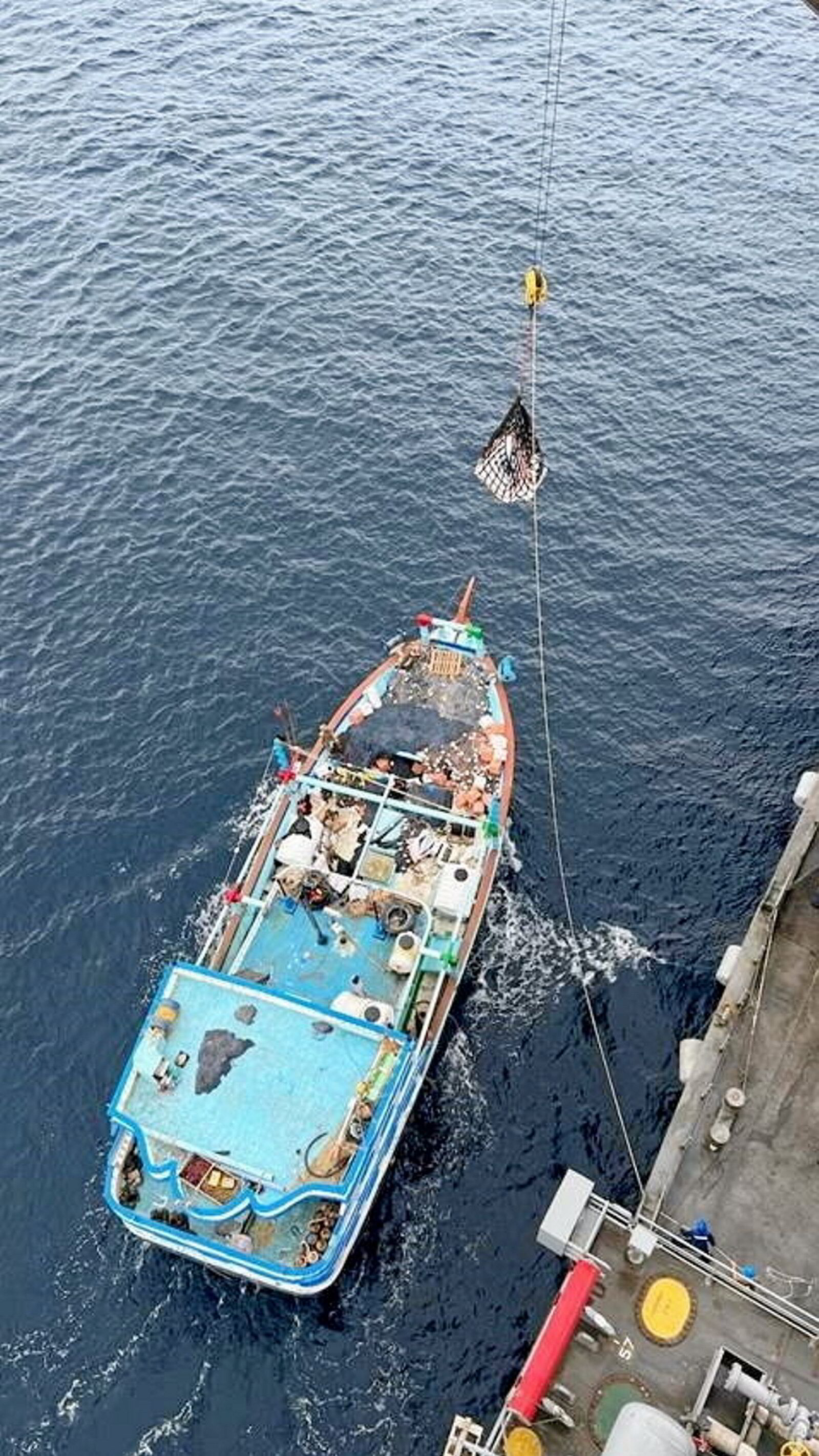
Forces from a US warship found it in the Arabian Sea on 11 January.
The USS Lewis B Puller (built 2017), America’s first purpose-built expeditionary mobile base, deployed a boarding team made up of Coast Guard maritime safety and security personnel and Navy special forces known as SEALs.
As the team approached, Pahlawan allegedly instructed the crew not to stop and to set the dhow alight, according to the indictment.
Authorities were able to board the vessel to carry out a flag verification in international waters, but they found no flag of nationality for the dhow.

The boarding team found a crew of 14, including Pahlawan.
Prosecutors alleged that the captain threatened other crew members on the ship so that they would lie to the boarding team, including an instruction that they tell authorities that he was a mechanic and not the captain.
Crew member Mohammed Mazhar, for example, allegedly told the boarding team that the dhow’s captain had departed and took all the vessels’ paperwork with him. Ghufrun Ullah is accused of telling US authorities that the Yunus had come from Pakistan rather than Iran, court records show. Both have pleaded not guilty.
Pahlawan also told lies of his own, the indictment charges, repeating Mazhar’s story of the departed captain.
When the boarding team inspected a net hold in the dhow, they instead found what the indictment described as advanced conventional weaponry made in Iran.
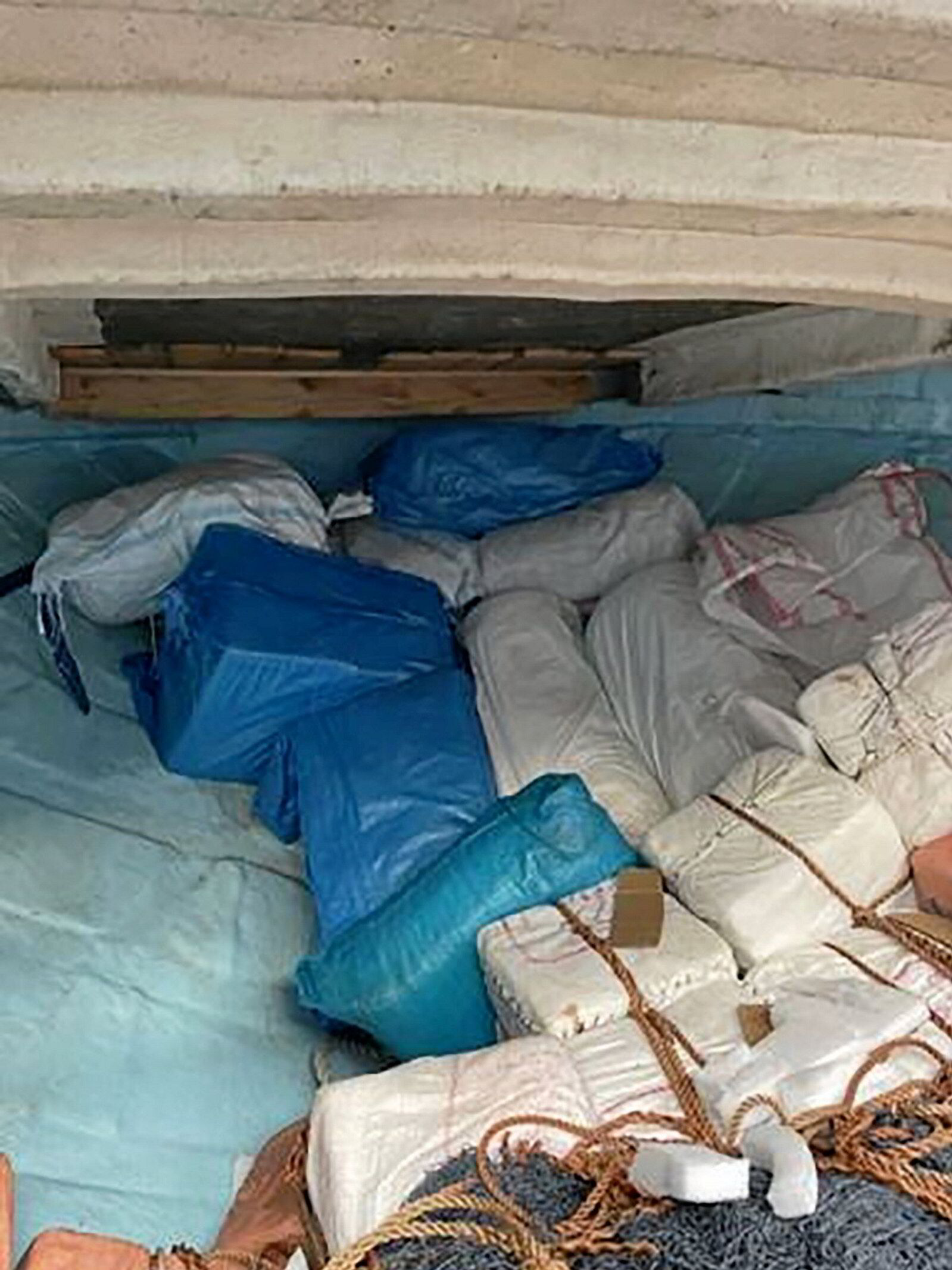
They found a warhead, along with propulsion and guidance components for missiles, documents show.
The components included parts for Noor anti-ship cruise missiles — long-range weapons built in Iran based on Chinese designs.
And there were components for medium-range ballistic missiles identified as Qiam-4s.
A US analysis of the components found on the Yunus and another vessel boarded in January said comparisons of the seized materiel with photos of Tehran’s weapons and debris from Houthi “strongly indicate their Iranian origin”.
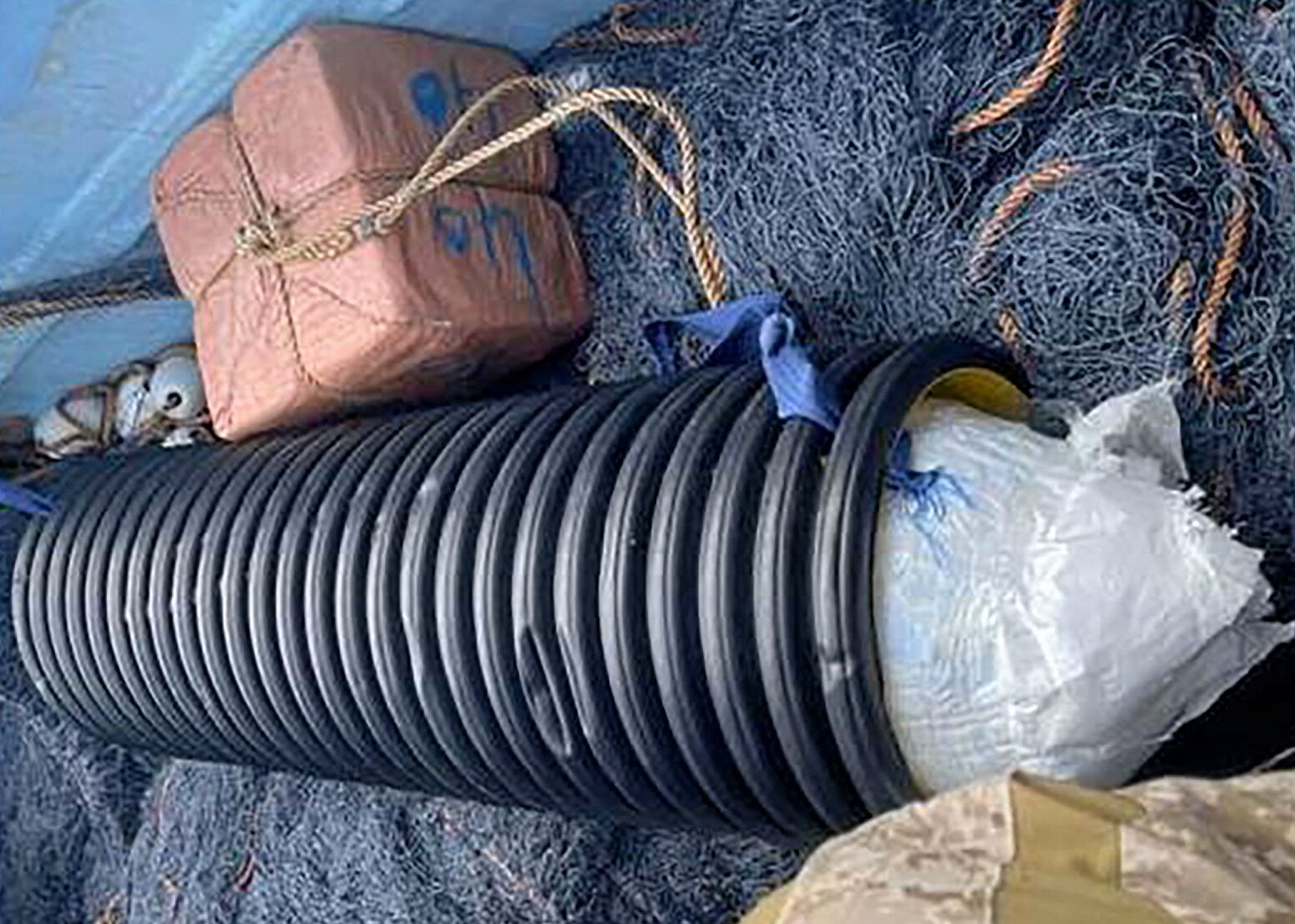
In the report published at the end of April, the Defense Intelligence Agency said the Tolu-4 missile turbojet engines found on the dhow have features that are consistent with debris left in a Houthi attack on the 20,000-dwt Strinda (built 2006).
The tanker, owned by Norway’s J Ludwig Mowinckels, was attacked by missiles in December.
The Qiam missile parts were consistent with debris from a 2017 Houthi attack in Saudi Arabia, the agency said.
Despite successfully uncovering weapons, the interdiction of the Yunus ended in tragedy for the boarding team.
One Navy SEAL slipped from a ladder into the ocean, and another jumped in to save him.
The two men — special warfare operators Chris Chambers and Gage Ingram — disappeared into heavy seas, and the Navy declared them dead after a 10-day search.
“They were exceptional warriors and cherished teammates and dear friends to many within the Naval Special Warfare community,” Navy Captain Blake Chaney, commander of Naval Special Warfare Group 1, said of the two SEALs.
The US Navy sank the Junus after deeming it unsafe in the wake of the seizure.

Pahlawan was indicted in March on charges of maritime transportation of weapons of mass destruction. He and fellow Pakistani crew members Mazhar, Ullah and Izhar Muhammad, who has also pleaded not guilty, were charged with providing false information.
After months of investigation, the new indictment superseding the earlier charging documents builds on the earlier charges.
The Mir’kazei brothers and Pahlawan were charged with “providing material support or resources to terrorists, resulting in death” and conspiracy.
The indictment also charges them with participating in threatening the US with weapons of mass destruction and “conspiring to commit violence against maritime navigation and maritime transport involving weapons of mass destruction, resulting in death”.
And Pahlawan faces a charge of committing violence against maritime transportation, and witness tampering.
If convicted, he and the Mir’kazei brothers face up to a life sentence in prison.
While Pahlawan was formally arrested in February, US magistrate judge Mark Colombel has ordered an arrest warrant for the Mir’kazei brothers, who remain at large.
But their alleged smuggling operation made up but a small part of the wider network that the US believes Iran uses to supply the Houthis.
The Defense Intelligence Agency said the Junus was among 20 smuggling vessels that have been interdicted by authorities of the US, France, Britain, Saudi Arabia and Australia that were believed to be supplying the Houthis.
Read more
- Second shadow LNG carrier loads at sanctioned Russian plant
- US charges trio for smuggling weapons used in Houthi attacks on shipping
- Greek tanker faces 24-hour onslaught as Houthis target ship with grenades, missiles and drones
- Houthi lull ends as grenade explodes near Delta tanker and missiles take aim at container ship
- Shipping braced for Israel-Lebanon flare-up as tankers skip tinderbox region
